Lime varieties - description and characteristics
Lime is the closest relative of lemon. Rich green lime fruits have a fresh, rich aroma and pronounced sourness. They are widely used in cooking. They learned to grow the plant at home. It requires care, but it takes root easily, blooms beautifully and bears fruit abundantly with proper agricultural practices.
The appearance of the tree (or bush), care requirements, taste and type of fruit largely depend on the variety. There are several varieties of limes, and each of them includes several crops. What is the peculiarity of each variety - read on.
Lime hybrids and varieties
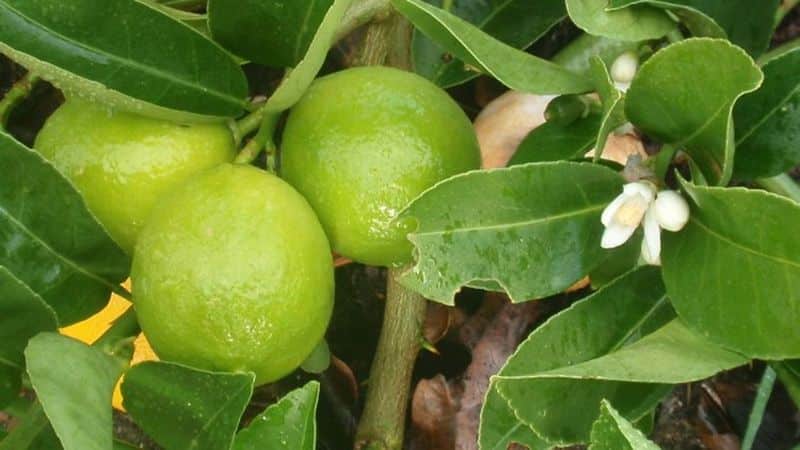
There are several groups of lime varieties. They differ in the taste and color of the fruit, the size of the leaves and the shape of the leaves, and even the requirements for growing. Some of them look quite unusual.
This is interesting! After Lipton released a series of Yuzu Lime flavored teas, many became interested in what it was. Yuzu is a product of natural selection of mandarin orange and Ichan lemon. It has light orange fruits with a bumpy skin. It has a pronounced citrus aroma and a more sour taste than lime.
finger lime
Australian finger lime - one of the most unusual citrus plants. It is also called finger lime.
This is a tree or shrub with unusual fruits. Many citrus growers are amazed by the beauty of its fruits and inflorescences.
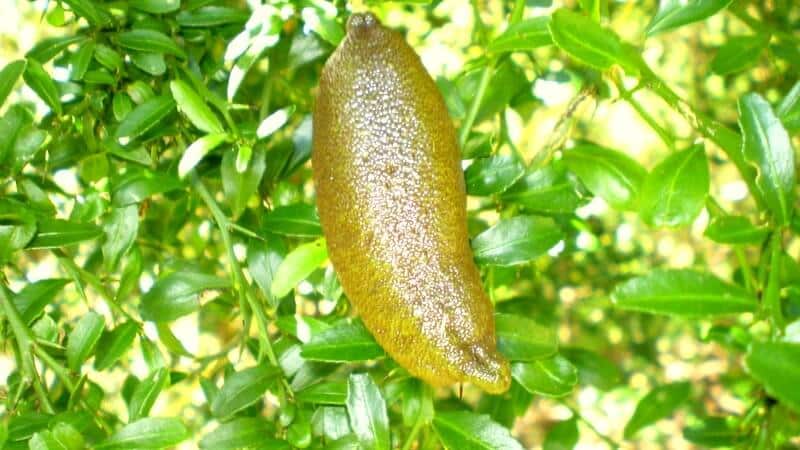
Key Features of Finger Lime:
- Crown. The height of a tree in its natural habitat reaches 8 m, and a bush – 3.5 m.The plant is branched, densely leafy. The branches are quite thin, but at the same time strong. They have sharp long spines.
- Leaves. The leaf blades are small, oval-round in shape, tapering at the ends. The color is rich green. The cuttings are short.
- Bloom. The flowers are small, reaching a diameter of 1.5 cm. They are pink on the outside and white on the inside. The plant is covered densely. They have an unusual citrus aroma. The bush blooms in late summer or early autumn.
- Fruit. They have an oval-elongated, often slightly curved shape. They reach a length of 5-8 cm. The color can be burgundy, dark green, red or brown. Under the thin, bright peel are bags of juice that are white, pink or green. In appearance they resemble eggs. The pulp is juicy, with a sweet and sour taste, in which some astringency and pine notes can be traced. The aroma is rich, but not typically lime.
Finger lime fruits are harvested when they are fully ripe. Unripe fruits have a bitter taste.
This is interesting! The price of finger lime reaches $100 per 1 kg. It turns out that one lime costs 2 dollars.
There are several varieties of finger limes. Some of them are presented in the list:
- Rick's Red. It has a red skin and red flesh.
- Mia Rose. Fruits with pink skin and pink flesh.
- Byron Sunrise. Beneath the deep wine-colored skin is reddish-orange flesh.
- Collete. The peel is dark green, almost black. The flesh is light green in color.
- Tasty Green. Light green fruits with transparent green-tinged flesh.
- Bed Centra Lime. Orange peel and inner filling. The pulp is not “eggs”, but has a standard appearance for citrus fruits.
- Green Astonville.A dark green fruit with light green, almost transparent flesh.
- Pink Pearl. Almost black peel and coral filling.
- Pink Ice. Citrus with a golden-brown shape and light pink flesh.
- Emma. Black fruits with white flesh.
- Red Champagne. It has a red skin and pink flesh.
- Puple Bliss. The golden-brown skin hides purple flesh.
- Straight Species. Fruits with almost black skin and white transparent pulp.
Mexican
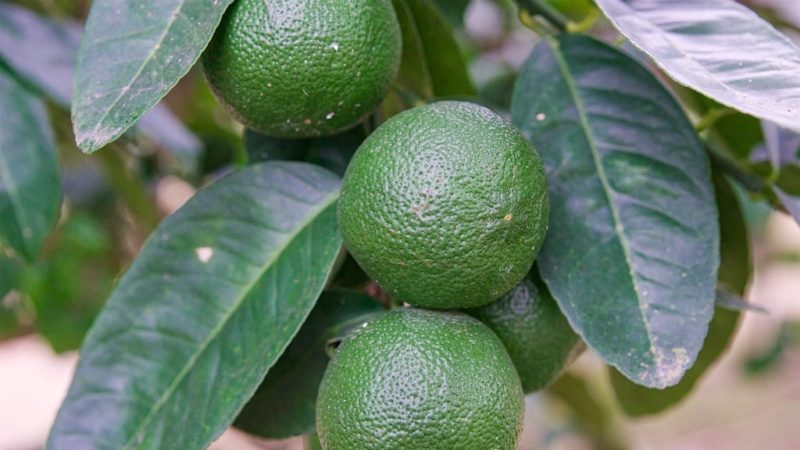
Mexican lime is one of the most popular varieties of this fruit. It is the one most often found on grocery store shelves.
Lime variety descriptions:
- Crown. The shrub reaches a height in natural conditions of 2 to 4 m. Spreading, well-leafed. The branches are thin, spreading, covered with thin and sharp spines.
- Leaves. Dark green, leathery, round, with elongated petioles. They reach 7 cm in length.
- Bloom. The flowers are solitary, small, white. The aroma is weak, often absent altogether. The buds are pinkish on the outside and white on the inside. Flowering occurs in early spring and late summer.
- Fruit. Ovoid, medium size. They have a thin and smooth green or pale yellow glossy skin. The greenish pulp is juicy and aromatic, sweet and sour. Not many seeds.
There are dozens of varieties of true (Mexican) limes. The list contains the most popular of them:
- Everglede. It has large fruits with a sharp tip at the top. The peel and pulp are light green. This is a very aromatic citrus with a sweet and sour taste.
- Yung. It bears fruit all year round. It has medium fruits of light green color.
- Kagzi. It has fruits whose color varies from yellowish to dark green depending on the subtype.
- Palmetto.Egg-shaped, but almost round fruits with a very thin pale yellow skin. The pulp is juicy with a pronounced aroma.
Palestinian sweet lime
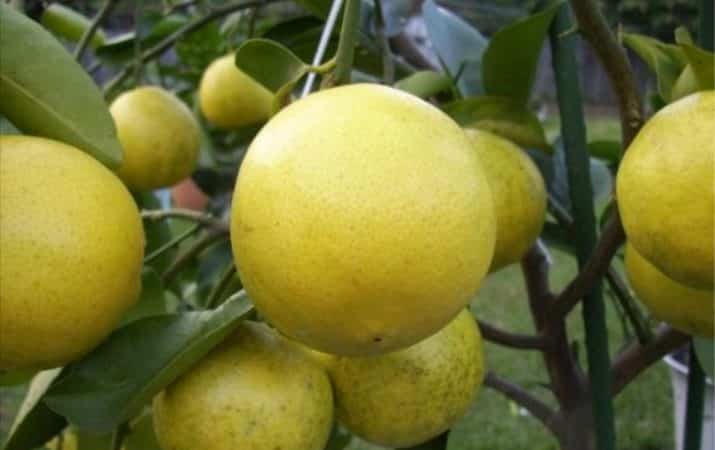
Palestine lime is the sweetest variety of this crop. It is also called Indian. The plant looks more like a lemon than other limes.
Description of Sweet Lime:
- Crown. A medium-sized spreading tree, the maximum height of which reaches 8 m. The branches are thick, prickly, abundantly leafy.
- Leaves. Elongated oval shape with a narrowing at the end. Sometimes folded or twisted. Density is average. The color is pale green.
- Flowers. Flowers are collected in inflorescences of several pieces. They are of medium size. The color is white inside and outside. The aroma is rich.
- Fruit. Large, spherical in shape. In some cases, there is a nipple with a small groove at the top. The peel is thin, adheres thinly to the pulp, smooth, yellow in color. Has a rich lime aroma. The pulp is light yellow, juicy and tender. The taste is sweet, practically without sourness. There are few seeds.
This is interesting! Rangpur is not a lime. This is the name of a hybrid of lemon and tangerine. Outwardly, its fruits really resemble sweet limes, but their skin is thicker and bubbly.
Kaffir lime
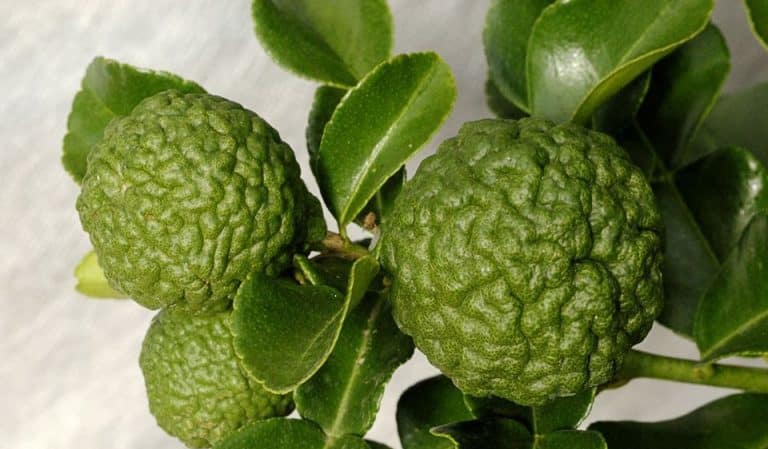
Kaffir lime is not a real lime. This plant belongs to the species Papeda quillum. Its fruits actually resemble limes in appearance, but differ in taste.
Characteristics of Kaffir Lime:
- Crown. Tree growing up to 2 m in height. It has powerful and durable branches with thorns. The tree is branched, well leafed.
- Leaves. The leaves are double, shaped like an infinity sign or an hourglass. They are leathery, juicy and dense. Color dark green. It is the leaves that are most valuable in this plant.Thanks to their rich citrus tart aroma, they are actively used in cooking.
- Inflorescences. The flowers are small, with a delicate aroma that differs from other citrus fruits. They are formed in inflorescences of 2-3 pieces and tightly cling to the bush. The outside of the buds is white with light pink spots, and the inside is pure white.
- Fruit. The fruits are dark green, very lumpy, similar to lime. They have a rich aroma of citrus essential oils. The pulp is dry, tart and sour. It is not consumed raw, but the zest is actively used in cooking.
Round
The Australian round lime is considered one of the tallest representatives of citrus plants. It got its name from its round-shaped fruits.
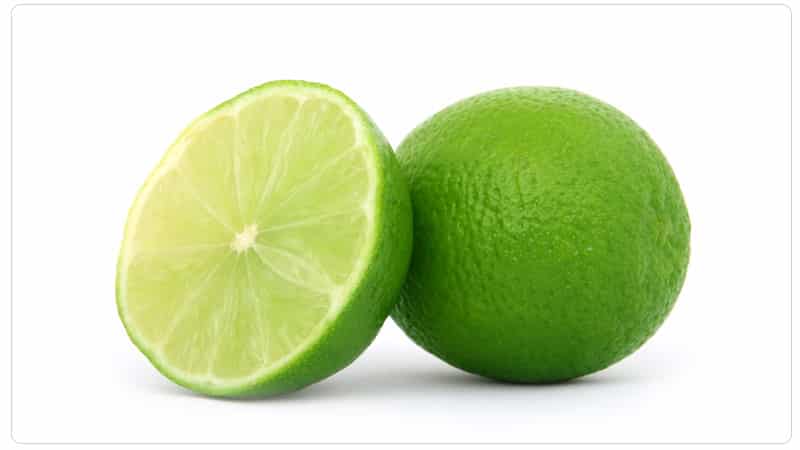
Description of round lime:
- Crown. A tall tree or shrub reaching a height of 12 m. The crown is spreading. The branches are powerful, with spines in the axils of the leaves.
- Leaves. Oval-round or ovoid in shape. There is serration along the edges, which is especially pronounced closer to the tips. The leaf blades are dark green, with pronounced dots, which represent large enlarged pores. Young leaves are lighter and elongated. The petioles are long.
- Inflorescences. White or pink. Single, 1 cm in diameter.
- Fruit. Green color. Medium size. Each fruit has an average diameter of 6.5 cm. The peel is thick, very lumpy. The pulp is sour with a pronounced aroma.
Persian lime
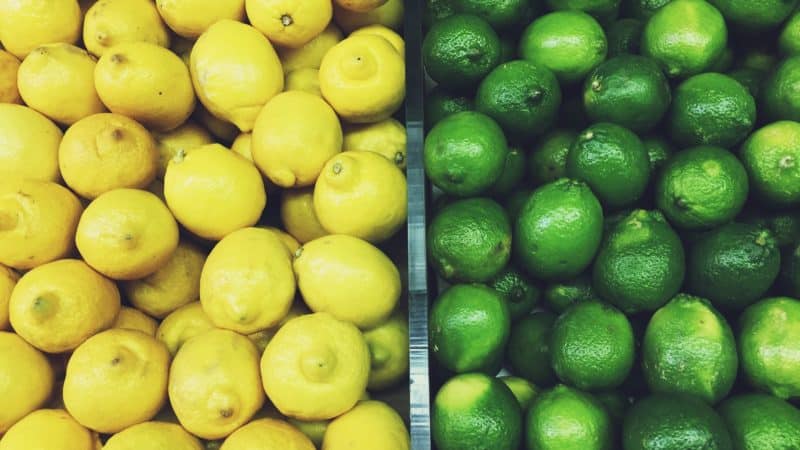
Persian lime or Tahiti lime is a triple hybrid. It contains genes from micro-citruses, grapefruits and lemons.
Description of the plant:
- Crown. A tall tree with a spreading, abundantly leafed crown. The branches are thin but strong, practically without thorns.
- Leaves. The leaf blades are wide, bright green.
- Flowers. Medium size.Blooms a year after rooting. The color of the flowers is purple on the outside and white on the inside.
- Fruit. Small size. The color is dark green. The pulp is green-yellow, juicy. The taste is sour with a lime aroma. There are no seeds or very few of them. The shape is ovoid with a pointed nose.
Deserted
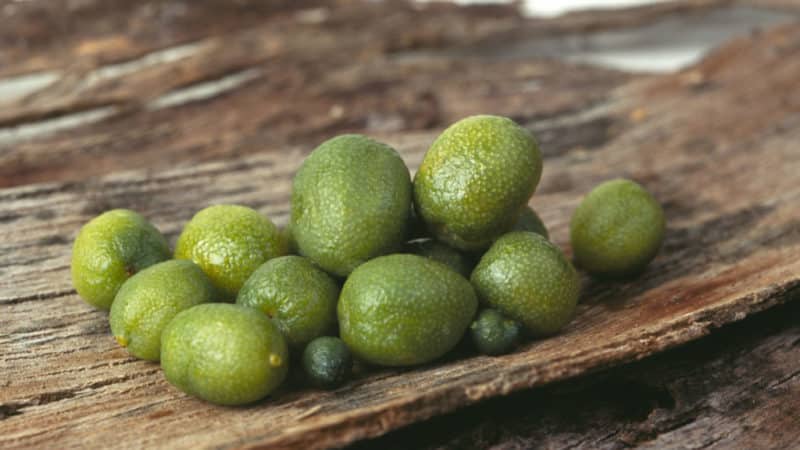
Desert limes are grown in arid regions of the United States, Australia and Mexico. It is the only citrus that can grow in low humidity conditions, but cannot tolerate humid climates.
Desert Lime Description:
- Crown. A thorny shrub or tree up to 7 m high. The branches are thin, covered with thorns that are unevenly spaced.
- Leaves. Long oval shaped. They are meaty and flavorful. The color is dark green.
- Bloom. Small single buds. They are white or greenish in color inside and out.
- Fruit. Green or green-yellow round. Very small, their diameter is only 1.5 cm. Very juicy, with a pleasant sour taste and rich lime aroma.
Features of growing finger limes at home
Indoor finger lime requires care. Despite this, if you follow the basic rules of agricultural technology, there will be no problems with its cultivation.
Landing
In its natural environment, finger limes develop by seeds, but they have low germination rates and germinate slowly. When grown at home it is used graft on the rootstock of any other citrus plant.
A seedling for grafting or a young tree in a pot is bought in specialized flower shops or ordered by phone from a nursery.
It is most convenient to graft the cuttings into a cleft. To do this, choose a healthy scion with 2-3 buds.
There should be no traces of disease or damage. The vaccination is performed as follows:
- The rootstock is cut by 2/3 so that only the trunk without leaves remains. An incision 1-1.5 cm deep is made in it.
- The lower part of the scion is sharpened into a thin wedge. Its length should match the depth of the cut on the rootstock.
- The rootstock is inserted into the scion so that they are in maximum contact with each other.
- The junction of the scion and the rootstock is tightly wrapped with garden tape. There should not be any open areas left.
- The plant is covered with a bag or a cut bottle. It is sprayed, ventilated and watered daily.
The formation of leaves or shoots indicates that the graft has taken root. After this, the greenhouse is dismantled.
Conditions for growth
In order for the finger lime to feel comfortable at home, it is important to provide it with optimal conditions.
They are listed:
- Temperature. Finger lime is a heat-loving plant. In order for it to bloom and bear fruit, the room temperature must be at least 30-35 °C. If this indicator drops below, the tree will not bear fruit. At temperatures from +2 °C and below, the tree dies.
- Lighting. This is a light-loving plant. In the warm season, it is placed on a southern or southwestern windowsill. At the beginning of spring and at the end of autumn, it is recommended to use additional lighting. During the day, the window is covered with a translucent curtain to protect the plant from burns.
- Humidity. This is a moisture-loving plant. To maintain an optimal level of humidity, the tree is sprayed daily, 1-2 times a day. In winter, spraying is carried out if the lime is not at rest.
- Wintering. In winter, it is recommended to put citrus fruits into dormancy. To do this, they are placed in a room with a temperature of +8…+10 °C.In such conditions, lime does not need spraying, additional lighting or fertilizing. Water it 1-2 times a week. If it is not possible to move the plant into a cold room, then use additional lighting, spray it daily and water the tree frequently. It is not recommended to fertilize it at this time.
Note! Finger limes are sensitive to temperature changes. If you put it in a draft, it will die.
Basic rules of care
Finger limes are easy to care for. The main thing is to follow the basic rules:
- Watering. In warm weather, lime is watered every day or every other day, depending on the outside temperature. Watering should be frequent, but not abundant. For irrigation, use warm, settled water. The procedure is carried out early in the morning or at sunset.
- Loosening. Once a week the soil is loosened. This is necessary to destroy the earthen crust and restore normal air exchange.
- Formation. Finger limes grow very quickly. Sometimes it has to be formed 3 times a year. The first time its top is pinched when it reaches a height of 20-30 cm. Then the side shoots are pinched up to 4 orders when they reach a length of 20 cm. From 3 to 6 skeletal branches are left at each level. All diseased and dry shoots are removed.
- Washing. Once a week, wipe the citrus leaves with a damp cloth. Every month the tree is washed in the shower.
- Feeding. Finger limes require less feeding than other citrus fruits. It is fed from the beginning of the growing season until fruit formation once every 2-3 weeks. Alternate mineral and organic fertilizers.
- Transfer. For the first three years, the lime is replanted annually. Then once every 3 years.
Conclusion
Lime is a citrus plant with sour fruit, similar to lemons, but with a different aroma and taste. Contrary to what many people think, such a fruit can have more than just a green tint. Depending on the variety, it can be green, yellow, pink, burgundy, black, red, etc.
The finger lime is one of the most unusual citrus plants. Its elongated oval fruits have peel and pulp of the most unusual shades. Inside they are filled with round bags of juice, reminiscent of caviar. And such an exotic tree is also easy to grow at home.